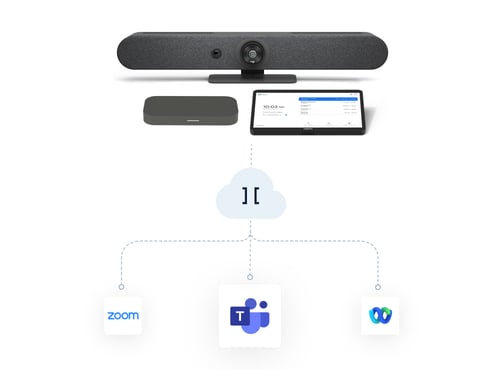Telehealth offers a wealth of benefits to both patient and provider. Virtual visits have been shown to improve accessibility to care while saving healthcare organizations time and money. But as telehealth gains more focus, it’s important to think about the situations where it can have the greatest impact. When we talk about modernizing healthcare, there’s one group of patients that may get overlooked, but who can potentially benefit from this technology the most: the millions of people battling chronic disease.
The very nature of chronic disease means it creates a challenging lifestyle. The burden of getting to and spending time at healthcare facilities can be taxing physically, emotionally, and financially. For some patients suffering severe cases, the sheer act of getting out of bed can be a hurdle to getting the necessary care. Factor in the Covid-19 pandemic and we see that for many, especially those with compromised immune systems, the past year has made management of chronic conditions more challenging than ever.
Why focus on telehealth for chronic diseases?
Chronic diseases such as heart disease, cancer, chronic obstructive pulmonary disease (COPD), stroke, Alzheimer’s, diabetes, and kidney disease account for roughly three-quarters of all physician visits, as well as 80% of hospital admissions and 81% of readmissions in the U.S. And nine out of ten prescriptions are related to the treatment or management of chronic illnesses, according to an article from AmWell. According to the World Economic Forum, a staggering one-third of adults worldwide have multiple chronic conditions.
While much focus is often placed on using telehealth for acute care diagnosis and treatment, this technology can be just as powerful, in some cases even more so, when applied to chronic illness, which requires practitioners to provide ongoing care with appointments on a regular basis. Offering patients the option to speak with their providers from the comfort of their homes can save hospitals money and, more importantly, provide patients with an experience that’s more manageable and accessible.
Care that’s efficient and cost effective, with fewer readmissions
In a traditional model of care for chronic conditions, the patient is seen in an office visit, then follow-up appointments are scheduled at arbitrary time intervals. Between those scheduled visits, the patient commonly ends up in emergency rooms, hospitals, or urgent care centers due to acute flare-ups. The cycle is inefficient, both economically and materially.
Patients with chronic conditions account for four of every five hospital readmissions -- one of the most prominent drivers of healthcare costs. Readmissions related to COPD alone amount to more than $15 billion annually in the United States, according to the National Association of Chronic Disease Directors.
According to HiMSS, the Department of Veterans Affairs showed a 20% reduction in readmissions with the use of telehealth services to improve home care for patients with multiple chronic diseases. Telemedicine can help reduce these costly readmissions by providing continuity of care.
Improving communications between patient and provider, with better access to care
One of the biggest challenges for patients with chronic disease is compliance with complicated and extensive behavior regimens. With the ability to remotely monitor patients, care providers can provide timely and clinically accurate patient prompts to help guide individuals towards health. By keeping patients healthy between provider visits, organizations can avoid costly cycles of hospitalization and readmission.
After hospital discharge, should new symptoms arise, telehealth allows clinicians to efficiently and effectively triage patients to the right level of care, saving both the patient and health system a trip to the emergency department or urgent care. These symptoms could result from medication change side effects, for example. Rather than forcing patients back into the office or emergency department, these concerns can be addressed in a direct and convenient manner for both patient and provider.
Telehealth can also improve overall access to care. Factors that limit access to traditional care include age and immobility, lack of convenient transportation, and other socioeconomic factors that might limit a patient’s ability to attend necessary follow-ups. When patients have multiple conditions, that in turn multiplies the number of providers they’re expected to see, increasing the burdens of attending these visits and follow-ups.
Choosing the right telehealth solution
While telehealth holds immense opportunities, it’s important to carefully consider the technology. The question becomes: How can I incorporate telehealth into my organization and what does a successful approach look like?
One of the most critical factors to consider is the ease of access for patients. The platform used for virtual visits must be simple, easy-to-use, and compatible with technologies and devices patients already have at home, whether it’s a phone, tablet, or computer. Effective telehealth for chronic disease management requires patient participation to be effective. Without easy adoption and a simple user experience, the technology will be rejected and unused. By breaking down barriers and providing patients with a solution that fits easily into their lifestyle, you’ve won half the battle.
However, this ease of use must apply to providers, too. Busy clinicians don’t have the time to learn completely new technologies and develop new workflows. The ideal telehealth video platform integrates into current practice management systems, scheduling flows, and electronic health records (EHRs). It works well with existing conferencing systems, and it eliminates the need for costly new hardware by allowing clinicians to join virtual appointments from any device, whether that is an office, an exam room, or a home computer.
Pexip Health powers telehealth solutions for some of the largest healthcare organizations in the world. To learn more, contact us today.
- Healthcare
- Digital transformation
- Video Platform





